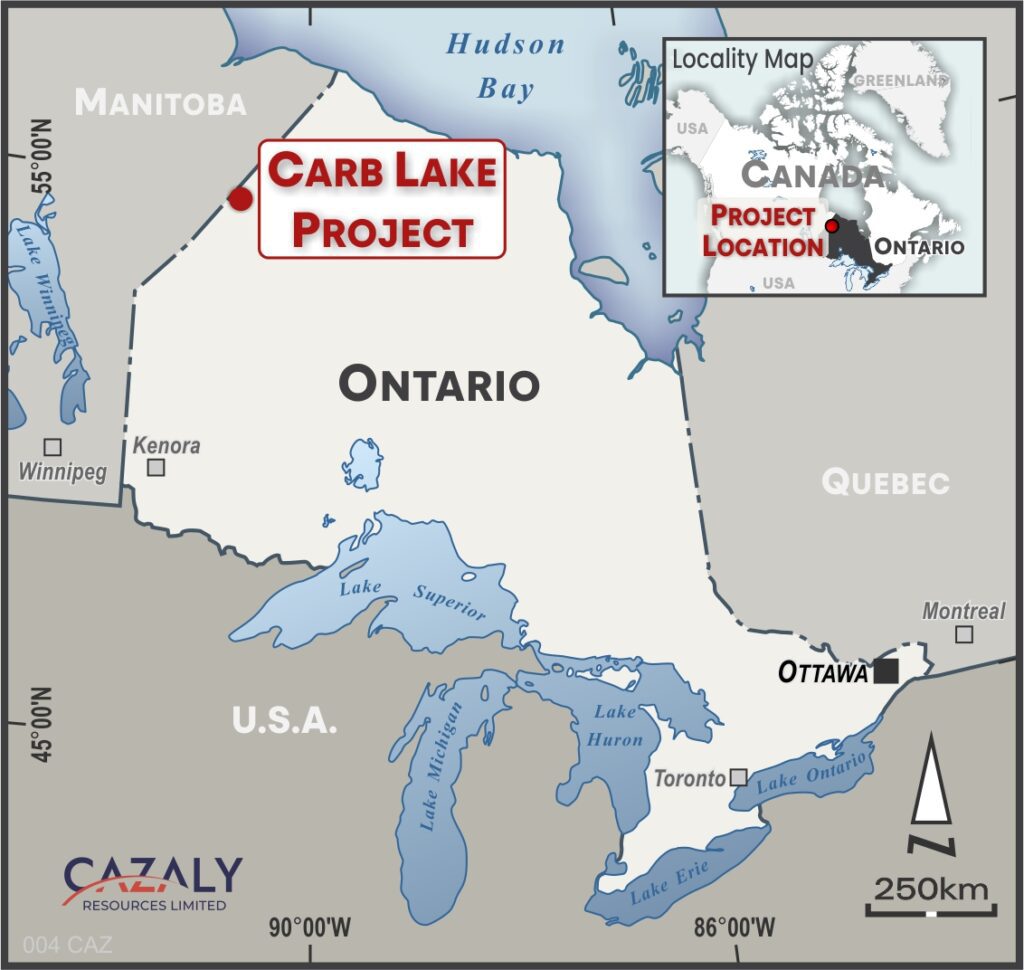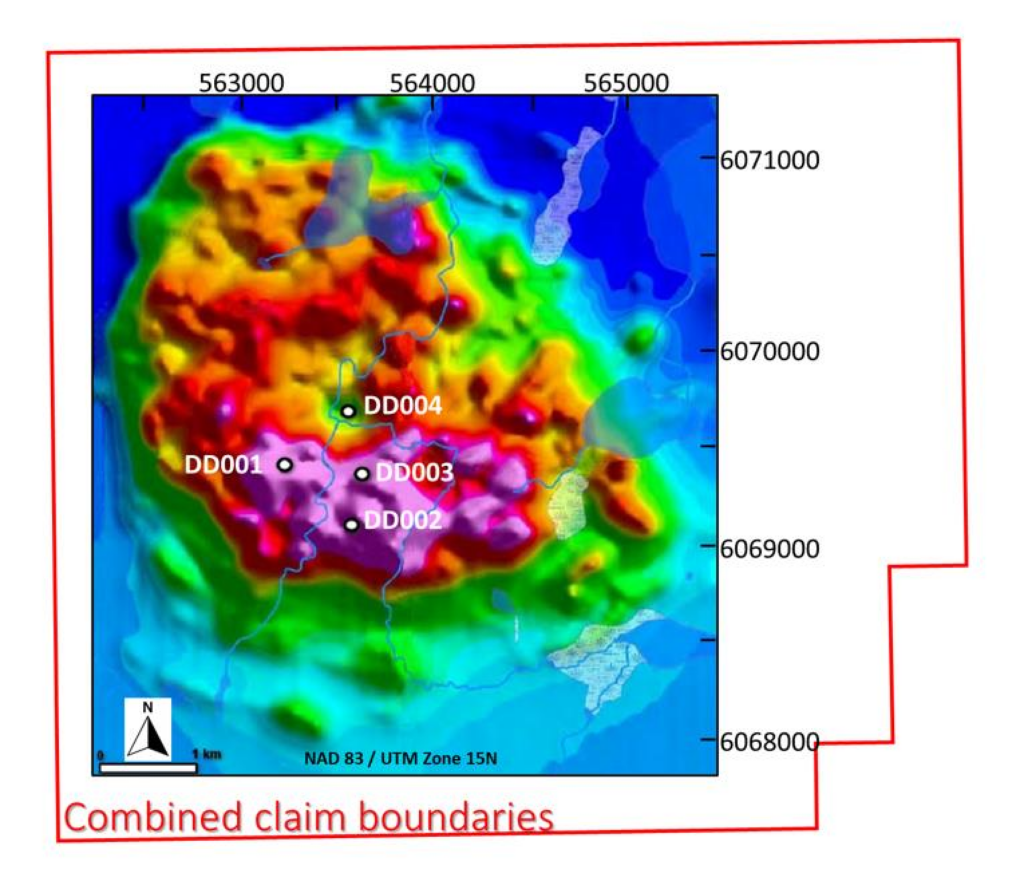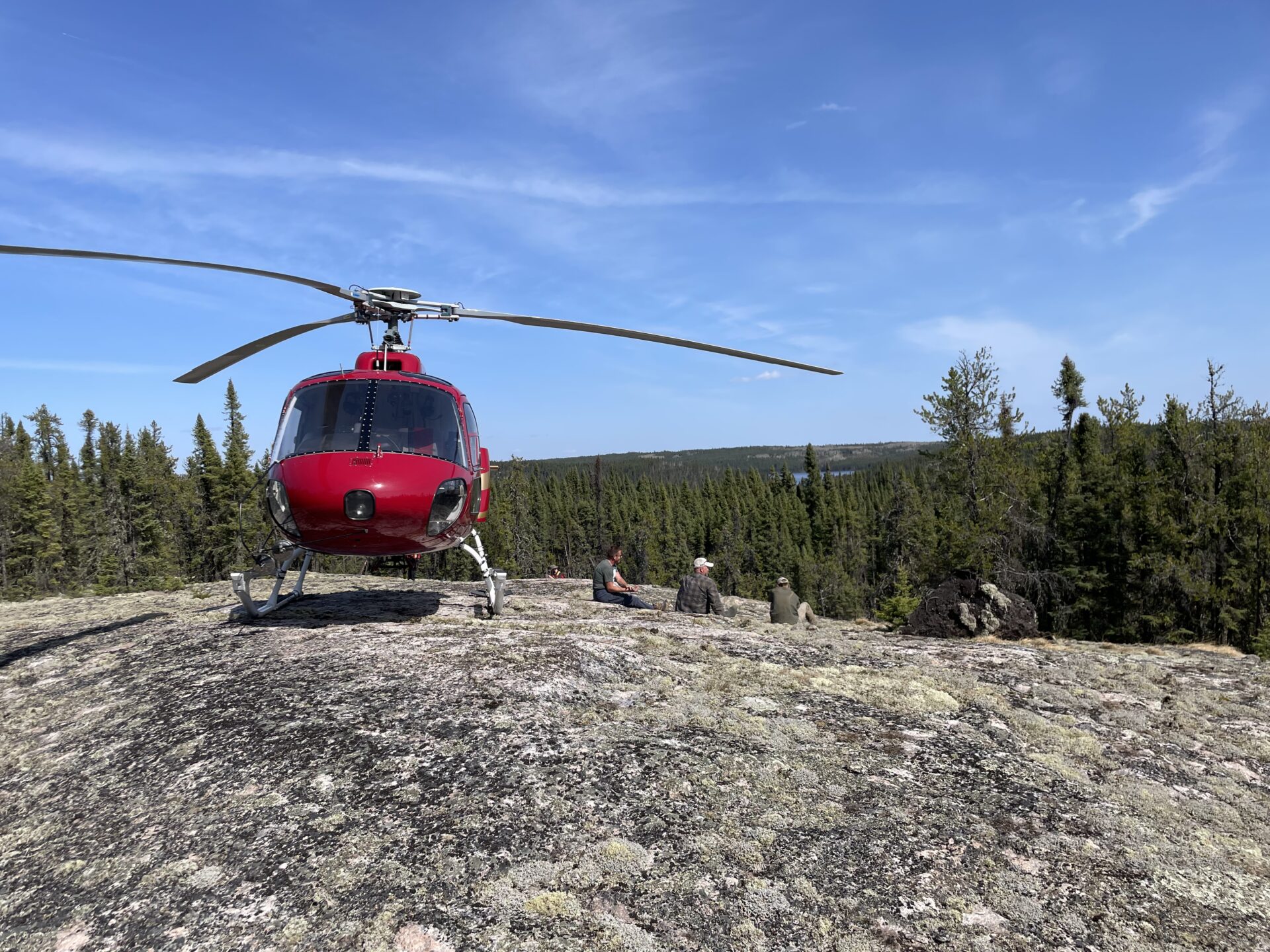
Carb REE Project
Carb REE Project
Red Lake District, Ontario, Canada
Located in the Red Lake District, a well known mining province in Canada
Large Scale Carbonatite
Largely Unexplored (Only 4 shallow diamond holes drilled in 1968, no exploration drilling in over 50 years)
Anomalous REE Assays (Niobium up to 7.1%)
Overview
The Carb REE project is located in the Red Lake District in Ontario, a well-known mining province in Canada and comprises 93 mineral claims covering a large carbonatite prospective for rare earth elements (REE).
Carb Lake REE Project Geology
- The project area is in north-western Ontario, 10km from the Manitoba border.
- The project comprises a large circular magnetic anomaly over 3km in diameter, known as the Carb Lake Carbonatite Complex prospective for rare earth elements and niobium.
- The Carb REE Carbonatite Complex is a Proterozoic aged intrusive unit hosted within Archean felsic to intermediate rocks of the Superior Province of the Canadian shield, within the Kenyon Structural Zone (KSZ).
- Carbonatites are mantle derived melts and their spatial distribution is typically controlled by structural zones rooted in the lower crust.
The Carb REE project comprises a large, 2.5 to 3km diameter circular magnetic anomaly known as the Carb Carbonatite Complex prospective for rare earth elements and niobium. The project area is located in north-western Ontario, 10km from the Manitoba border. The project hosts a mid-Proterozoic aged carbonatite which has been emplaced into tonalites within the Northern Superior Superterrane which represents the northernmost exposure of Archaean Rocks in Ontario. The Project is located between two major tectonic terrane boundaries along the North Kenyon Fault, a significant crustal scale fault providing ideal plumbing for mantle derived magma to intrude through to the upper crust. The carbonatite is not exposed at surface with shallow cover from 7 to 12m.

Historic Exploration
Late 60’s
- Ontario govt geophysical survey identifies large circular magnetic feature
- Big Nama Creek Mines – airborne magnetic & radiometrics
- Niobium exploration – Four drill holes, average hole depth 140m – NO ASSAY RESULTS
- Petrographic analysis confirms carbonates as synchsite (Ce, La, carbonate) and ancylite (Ce, La, Sr carbonate)
- Drilling confirms mineralised carbonatite
Late 1960s to 1980s
- Ontario govt recovered diamond core and collected samples as part of a regional study
- Samples were analysed for major oxides and 24 trace elements including 2 REE’s (Ce, La) and Nb
- Two samples from drill hole 4 returned; >5% cerium, >1% lanthanum, >0.5ppm Nb. The best niobium result 7.1%
2011
- After China cut exports to Japan in 2010, supply concerns saw REE prices surge over 200%
- Countries and producers scrambled for new REE sources, interest in Carb Lake was renewed
- South American Rare Earth Corp (SAREC) flew detailed aeromagnetics
- SAREC also completed surface soil sampling across the carbonatite. No other work was completed
- Cazaly sourcing geochemical data & analytical findings, plus the digital geophysical data
Environmental Social Governance (ESG)
- An Environmental Impact Assessment will be conducted once exploration plans have been finalised
- No First Nations Claim exists over the property, however the land is used by the Sachigo Lake First Nations people for hunting and fishing
- Early communication has been established with the Sachigo Lake First Nation
History – Overview
The Carb REE Carbonatite Complex has had very limited modern exploration. Following the recognition of a large circular aeromagnetic anomaly in 1967, Big Nama Creek Mines Ltd conducted airborne magnetic and radiometric surveys in search of niobium. This was followed by drill testing the southern, predominantly more magnetic zones of the intrusive complex. Four diamond holes were completed for 564m, the only drilling ever completed over the project.
The major lithology described from drill core is sövite, a coarse grained carbonatite rock, alternating with layers of silico-carbonatite. Samples were analysed for niobium, but no values were reported by Big Nama Creek Mines.
Further work was conducted in 1969 by the Ontario Department of Mines, Geological Survey which analysed for two rare earth elements, lanthanum (La), and cerium (Ce), as well as niobium (Nb). No other rare earth elements were assayed. Eighteen samples from DD003 and DD004 were analysed for trace elements and La, Ce, and Nb. Details of down hole sample locations were not reported. However, geochemical analysis of sövite returned up to 8% P2O5 probably associated with apatite and enriched in Nb up to 1500ppm and light REEs. The best results reported were from DD004, drilled into the centre of the carbonatite complex in an area of low magnetic intensity (Figure 2), with two samples reporting >5% Ce and >1% La.
In 1978 the geological survey recovered drill core from two of the holes (DD003 and DD004) and analysed a further 36 samples for major oxide and trace elements. Results returned up to 5,620ppm Ce with one sample returning a value of 7.1% Nb.
No other work was conducted until 2011 when South American Rare Earth Corporation (SAREC) conducted an airborne magnetic/radiometric survey and an enzyme leach geochemical survey over the complex. The aeromagnetic image shows the variability in magnetic response across the carbonatite complex. The highest magnetic response (magenta) is across the southern portion of the carbonatite. The magnetics show partial ring structures around the centre of the carbonatite complex shown as green magnetic lows possibly representing multiple intrusive phases. SAREC collected a total of 275 surface samples, including 10 duplicate fields samples. The analytical results of this survey are to be acquired and their veracity assessed.

Latest Announcements


19 January, 2024
Sachigo First Nations discussions continue for the Carb Lake REE Project



